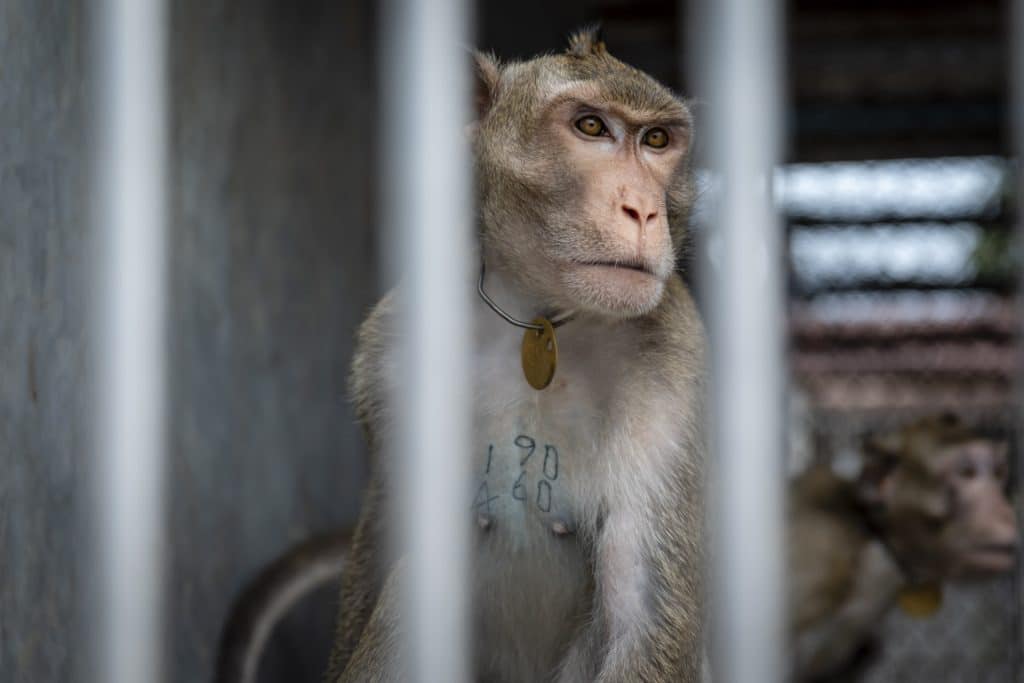With the countless animals lost from the array of captivity-related issues, why do zoos so fervently cling to the belief that they are good for animal conservation and welfare? How can this be true, when animals are simultaneously being killed by unnatural situations they would not encounter in the wild?
—
The Henry Doorly Zoo and Aquarium in Nebraska has just issued a warning to zoo visitors following the discovery of 70 coins (adding up to $7) in the stomach of a 36-year-old alligator named Thibodaux. The coins were found during a routine health check-up conducted on all ten of the zoo’s alligators, consisting of blood collection and radiographs. To remove the coins before they caused a serious health problem, Thibodaux underwent a procedure that required him to be anesthetized and intubated.
“A plastic pipe was placed to protect his mouth and safely pass the tools used to access the coins, such as a camera, that helped us guide the retrieval of these objects,” according to the zoo vet staff. Following the procedure, all the coins were successfully removed, as confirmed by a follow-up X-ray image. Thibodaux reportedly recovered well and is back in his enclosure.
A veterinarian stated that Thibodaux likely swallowed the coins when guests tossed them into his mouth. Following this incident, the zoo advised that “guests should not throw coins into any bodies of water at the Zoo. Any loose change can instead be turned in for a souvenir coin in one of the several machines around the Zoo or in our coin wishing well located in the atrium of the Desert Dome.”
Death Due to Foreign Object Consumption Is Not Rare at Zoos
While Thibodaux is extremely lucky that the zoo discovered the coins in his stomach before he experienced any major health complications, many other animals kept at zoos have not been so fortunate. Wild animals are naturally curious, and living for decades in small, simplistic, unnatural, and largely unchanging environments causes animals to explore and consume potentially harmful objects that they typically would not encounter in the wild. Sadly, death due to foreign object consumption is not a rare occurrence at zoos.
Every year, there are several reports of captive animals at zoos consuming foreign objects thrown into their enclosures by zoo visitors, which can result in severe injury or death. For example, inspection reports confirmed that a California sea lion at Moody Gardens, Texas, died in 2021 from ingesting a small plastic fish, which had been introduced to the enclosure as “enrichment.” In the same year, a young mountain lion who died at Cheyenne Mountain Zoo in Colorado was found to have an object that resembled rope or wire in their stomach. In February 2022, Zoo Miami, Florida, revealed the variety of objects swallowed by their animals, including sunglasses, a water bottle, bottle caps, and children’s pacifiers after they had been dropped or thrown into animal enclosures. Similarly, Edinburgh Zoo in Scotland revealed a vet had carried out 22 surgeries within four years to remove foreign objects swallowed by their gentoo penguin colony, including socks, gloves, and batteries. In August 2022, Tallinn Zoo, Estonia, announced that their northern ground hornbill suffered a “painful death” after swallowing a coin, which resulted in the bird hemorrhaging from their beak.
Captive Polar Bears Are Especially at Risk of Injury for Consuming Foreign Objects
Death by foreign object consumption is particularly prevalent in polar bears, potentially due to their largely opportunistic diet in the wild.
A male polar bear named Umka died at a Russian zoo in 2021 after swallowing a toy ball thrown into his enclosure by a young visitor. In 2014, Anton, a 25-year-old male polar bear, died at the Wilhelma Zoo in Germany from severe intestinal injuries after swallowing a jacket or bag dropped into his enclosure by a visitor. In 2003, 14-year-old male bear, Andy, died at Hogle Zoo in Utah after swallowing a visitor’s glove that had found its way into his enclosure. And, in 1996, at Scotland’s Edinburgh Zoo, 20-year-old polar bear Barney reportedly died in agony after swallowing a toy that had either been accidentally dropped or deliberately thrown into the enclosure by a young visitor (Born Free USA, 2023).
Zoo Enclosures Are Often Dangerous to Animals
Unfortunately, animal deaths caused by the conditions of captivity do not end with foreign object consumption. In addition to the many animals killed by infectious diseases that spread more easily and quickly in captivity, numerous incidents involving a vast array of species indicate that physical trauma from enclosure elements and conflicts with enclosure companions also contribute to a substantial number of animal deaths in captivity.
For example, as confirmed by Born Free’s 2022 Confined Giants: The Plight of Giraffe in Zoos report, giraffes are particularly prone to getting their heads, ossicles (horns), or necks entangled in netting, trees, wire, or other enclosure elements that have resulted in fatal spinal injuries.
Captive Animals Are Also at Risk from Conflict with Enclosure Companions
Conflicts with enclosure companions are extremely dangerous and can escalate quickly in big cat species, as most of these animals are solitary and territorial by nature. Competition for resources including food and water, resting places, and establishment of territories may provoke fighting.
In an independently conducted review of three AZA big cat studbooks including cheetahs, tigers, and Amur leopards, injuries from enclosure companions accounted for one of the four single largest causes of death for these animals and accounted for the deaths of 270 total individuals from ~1967-2019.
Despite the Risks Faced by Animals in Captivity, Zoos Still Insist that They Aid in Conservation
With the countless animals lost from the array of captivity-related issues outlined above (and no end to these devastating trends in sight), we continue to question why zoos so fervently cling to the belief that they are good for animal conservation and welfare. How can this be true, when animals are simultaneously being killed by unnatural situations they would not encounter in the wild?
Help us spare the lives of future wild animals by choosing not to support zoos, aquariums, and any other facilities that hold animals captive just because they can. Having the ability to do something does not make it right.
Keep Wildlife in the Wild.
Featured image: EO Photographer Amy Jones/Moving Animals.
You might also like: The Lies Zoos Tell


















